La Muñeca Negra: Black Beauty Has Always Been Present
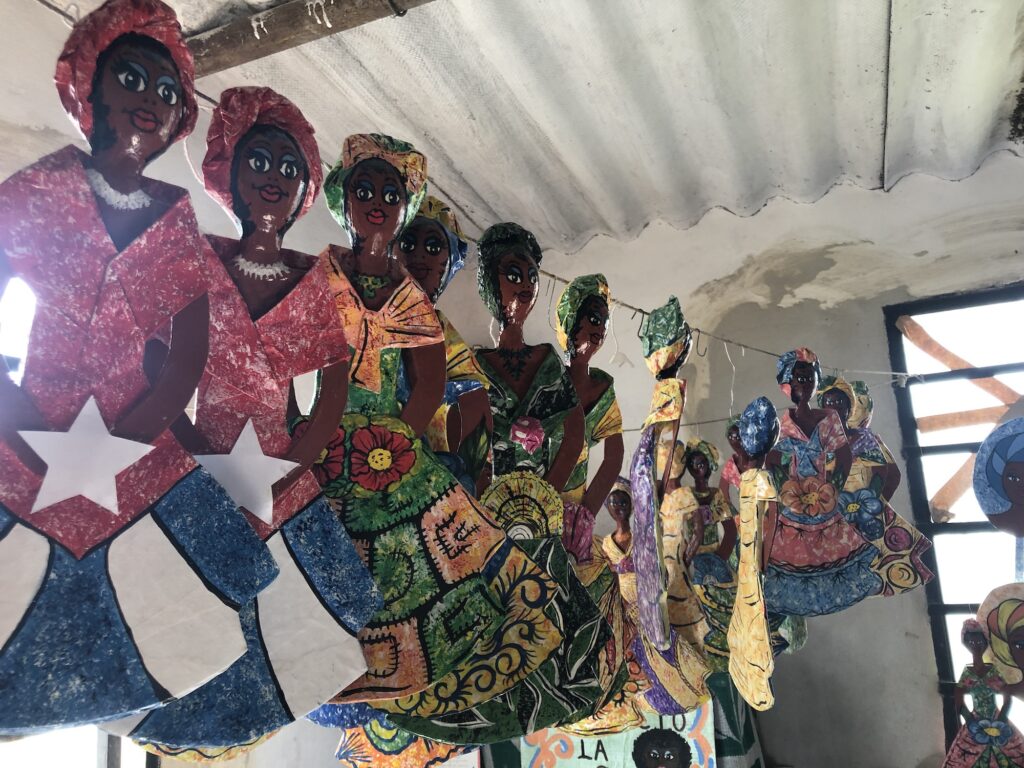
By Paula Margarita Montalvo Jorrin and Maritza Arango Montalvo
Translated by: Cindy García and Devon Severson
La Muñeca Negra is an artistic project founded and directed by the sculptor Margarita Montalvo. Her niece Maritza Arango Montalvo is the coordinator.
“Our identity is the past, the present, and the future. In our work, we enhance the beauty of the Black and ancestral woman, where we give way to the teaching of our culture through crafts and oral narration. The beauty of the Black woman has always been present, only that she has been marginalized, excluded, they have not wanted to see her, but she is there for everyone to see, coming from Mother Earth Africa, she prevails. Our identity is ourselves, it is hair, color, dance, religion, clothing. Our culture in general is there, and we will reproduce it for our children, young people. Our history must be understood by knowing where we come from, to know where you are going. Do not let them change our history. We have a legacy to defend and continue. ”
– Margarita
The Proyecto La Muñeca Negra began at the Adolfo Delgado de la Lisa Community House of Culture, in the neighborhood of Balcón Arimao. A casa comunitaria is the space where various experiences are fraternized. It has its own social objective and generally exists in places with a high rate of social disadvantage and there is no casa de cultura. A casa de cultura is the space where actions, studies, and research where all manifestations of art are promoted and local talent is discovered and supported. They exist in almost all the country’s provinces, but not in all municipalities. They have a group of art instructors who transmit their teachings in different manifestations (ceramics, theater, sculpture, painting, manipulation of puppets, music, dance), literary clubs, contests, events, festivals, and more. The country had taken art to far-flung areas where it never existed, but it needed to be extended to new communities, vulnerable, unhealthy neighborhoods, which had no knowledge or conditions to be provided to the populations, that is why the casas de cultura emerged. In La Lisa, a neighborhood in the province of Havana, the casa comunitaria and the casa de cultura are combined.
El Proyecto arose in 1980 due to the need imposed by the moment of rescuing values, values such as respect for the environment, community work, social responsibility before, valorization of manual work done by women, artistic potential of boys and girls to the vocational development and skills of the appreciation of the plastic arts and the craft value. In this period, there was a tremendous shortage of resources. This forced us to look for alternatives to not stop doing educational work. It was a critical moment in the country because there was no work with plastic arts and crafts. It was necessary to resort to recyclable material to work such as cardboard, nylon, plastic knobs, toilet paper tubes, deodorant tubes and balls, wood, eggshells, seeds, framboyan pods (leafy tree), etc. This has remained in our work, making it an ecological project. The recovery of raw materials helps to sanitize the environment but also creates social responsibility in the community, they contribute, like us, to local development with our utilitarian and beautifying articles also in function of the community. All material that arrived, any fiber, glue, paints, were mixed with polyfoam and gasoline, cloth and wood cuttings were also used. The experience has had an impact primarily in the community that has created awareness in the recovery of these materials and contributes to it. Due to the obstacles that our blockaded country was going through, we lacked everything we needed to work. That did not stop them to continue working, teaching, for the continuity of educational tasks, in short, they made their own work tools with which they could leave an artistic mark. Then, when they see how the pieces are given utilitarian use as decorations in their homes.
“Our proposal has wanted to transmit values, from a young age, such as honesty, love for the environment, to value artisan work, that they be Black and white friends, colleagues, neighbors, that they are in solidarity and I think that with that I have contributed to them.”- Maritza
“When I started making Black dolls, they were textiles and it was not because of religiosity, it was because of the absence and lack of recognition of Black women in all children’s games, in addition to not being religiously consecrated at that time. When I started in the religion and saw that many things in them were marginalized, it occurred to me to represent the Orishas, make pantheons, their attributes, let anyone know who did not know the colors that represented them, what attributes they carried to their patakines or legends. They carry messages of great human value for teaching values. It has had a great impact and acceptance in our community and outside of them as visitors and wherever our work has been present because our history, our culture is not only of Black people but of the entire Cuba that is pure mestizaje.”- Margarita
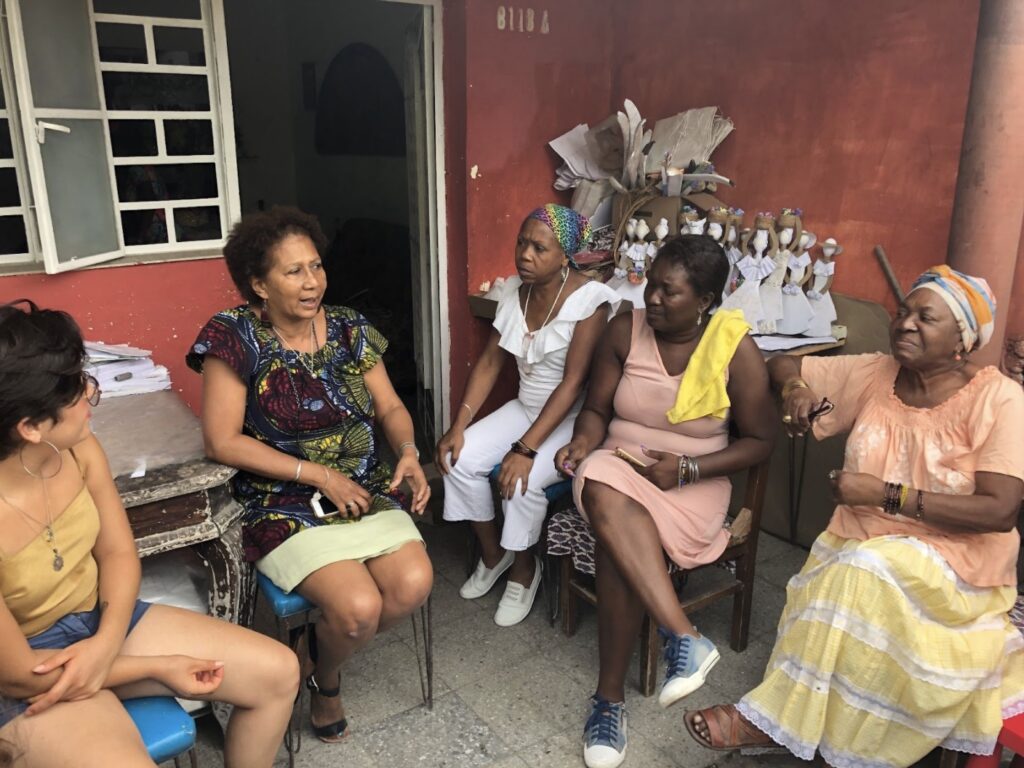
When Margarita retired, she turned her house into a workshop. It created a space for the enjoyment of recreational activities, the good use of free time, and educational and extracurricular activities. She taught classes to different age groups, to whom she dedicated her time to teaching totally free textile doll making and papel maché. All the fans with whom she worked, as well as those from the area who were incorporated as there were those who could not move to the casa de cultura because of the distance. This project has always been a tremendous mix, some came from the casas de cultura where Margarita worked, others were goddaughters of religion, who also brought others and in turn became godchildren, being a religious and working family. Their lives changed when they joined society trained in issues such as gender equality, female entrepreneurship, popular education, social solidarity economy, and others. Today, they are Black women empowered, trained, and with autonomy for decision making.
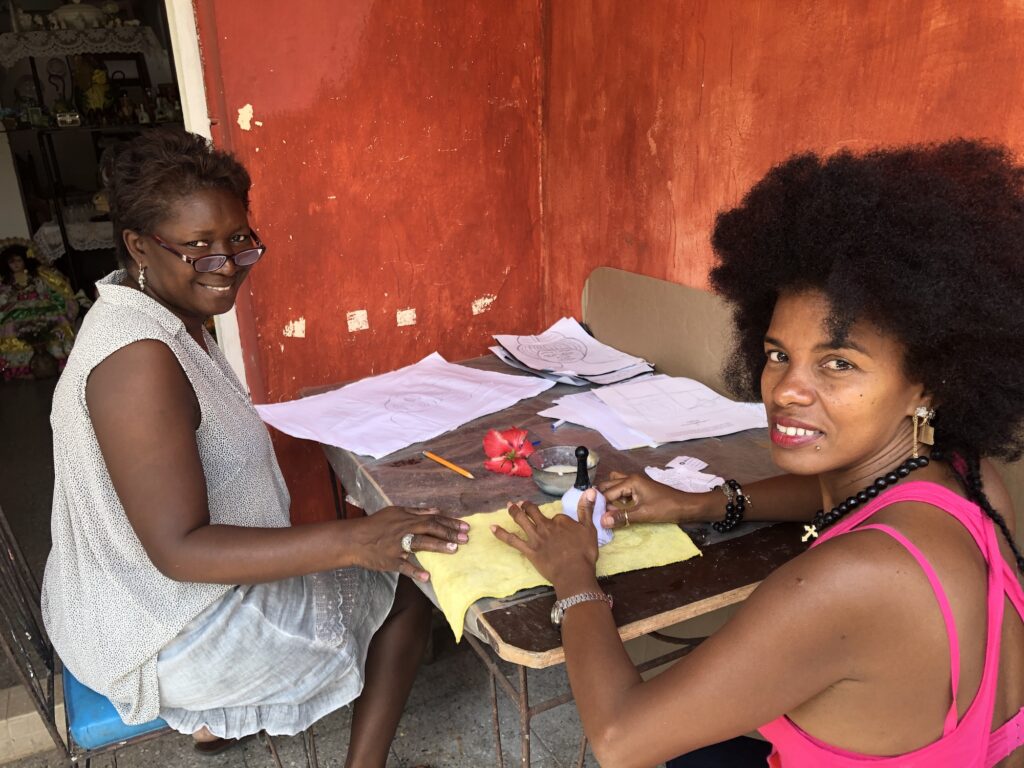
“I was always involved in one way or another, I learned a little about everything, although I did not participate in everything. I began to make jewelry, handbags and tapestries, crafts that were incorporated into the project. After spending some time, the project director, my aunt, asked me to be the coordinator in 2014. The entrance to the project made me take a leap in my life for the better, because thanks to that, my human development was increasing in cultural, economic and political knowledge, because what was something personal became a collective. I have been able to teach what I know, help other women to get out of their comfort zone and undertake, empower themselves, do workshops for children and adults, train myself, walk with knowledge, market my handicrafts, participate in events that make me feel good. My entry into the project made the artistic manifestations expand, for the good of all since the work in many cases can be done by anyone, also all this work that we do is in the development of the project, of our women and of the local development of our community.” – Maritza
Nowadays, manual labor has been expanded to other artistic manifestations, thus increasing the number of members, who in their majority are entrepreneurial and empowered older Black women, who are trained over time with workshops on equity and gender, female entrepreneurship, popular solidarity economy and others that has permitted them human growth. In an event to which we were invited by the Instituto Cubano de Antropología, works by different artists, paintings, sculptures, music, religious articles among other manifestations were exhibited, all referring to Afro culture, we exhibited the main Orishas from the Yoruba pantheon. We represented a garment of palo monte, all made of papel maché, and a bóveda espiritual (spiritual shrine.) When the place was almost full of visitors, something magical happened. Everyone passed in front of the bóveda (which was only a representation) and cleaned themselves with perfume saying las plegarias. There was a lot of spirituality and more than one let their spiritual currents, the belief and the faith of what they were praying for and to whom they were praying, escape. The magic of that moment was because although this was an exhibition that was not spiritually prepared for plegarias. The mere fact of seeing the bóveda espiritiual led everyone to say las plegarias that led to the beginning of a religious gathering. For that reason, it was magical for me.
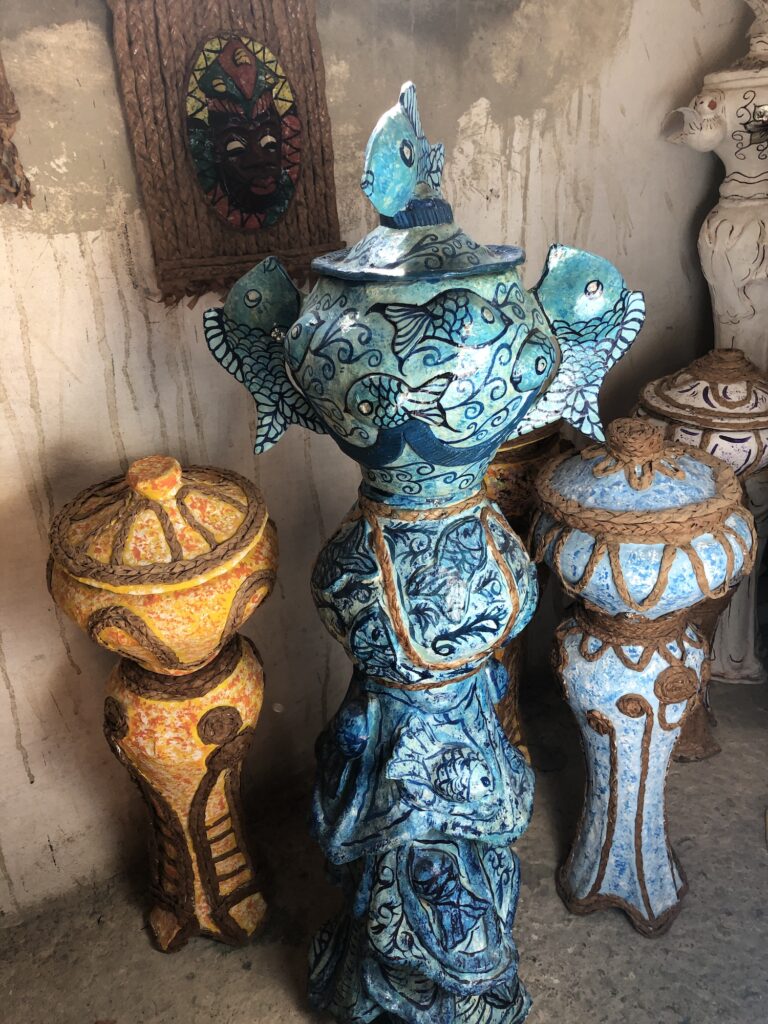
The main result of our project is the social impact on the community, seeing how they have created awareness of how recyclable materials can be recovered to beautify, ornamental and make our environment more beautiful. We are popular educators. We belong to the group of Mujeres de Desarrollo local, to Mujeres por la equidad and la Economía Popular Solidaria, and we are members of the Red Barrial Afrodescendiente. Today, in times of COVID-19, we join the making of nasobucos and donations of children’s items for circulos de infantes and casas de niños without filial protection, giving our contribution to the country and the community.
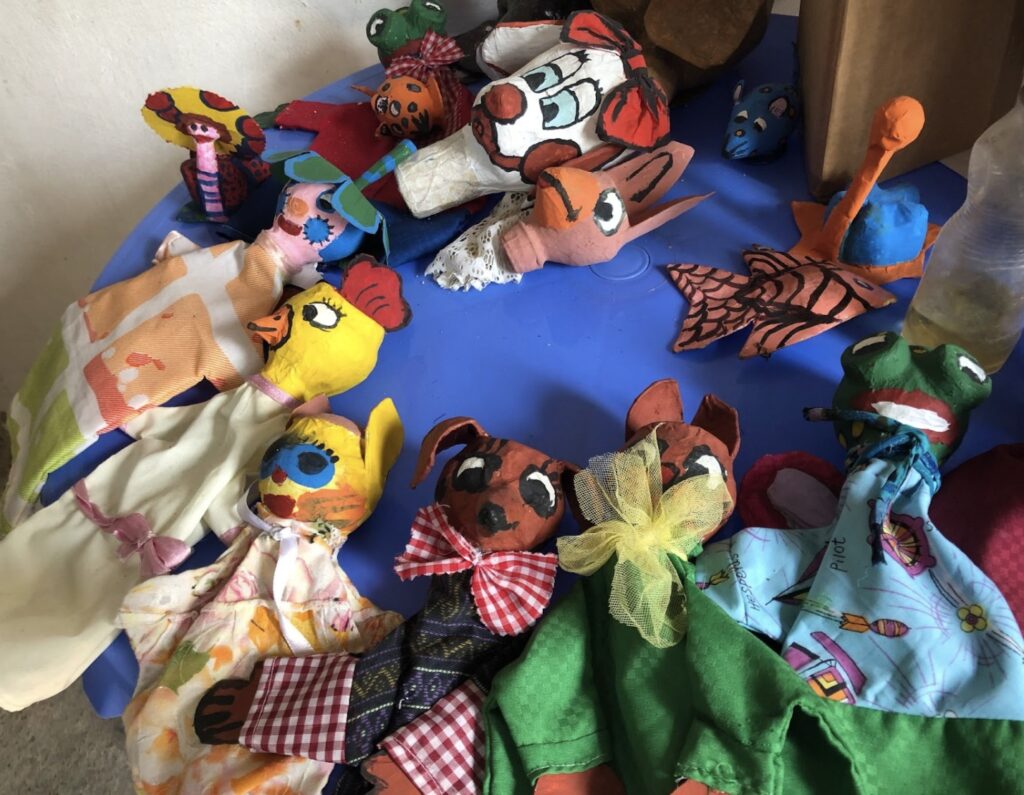
“I feel good about what I have created, although not fully realized since I still have many things to give and do. When I see my students with laurels, and when I see that they have done wonderful things such as bringing their own projects to life, I feel very proud because my time, my dedication to them, has not been in vain. They have put the Liseña and Cuban culture in a very good place and that fills with joy. “- Margarita
IPS Video: https://www.ipscuba.net/multimedia/la-muneca-negra-y-el-empoderamiento-femenino-en-la-habana/
Director: Paula Margarita Montalvo Jorrin. Graduated from the Escuela de Arte, “San Alejandro,” of drawing, painting, and sculpture in 1971. Professor of Plastic Arts.
Coordinator: Maritza Arango Montalvo
